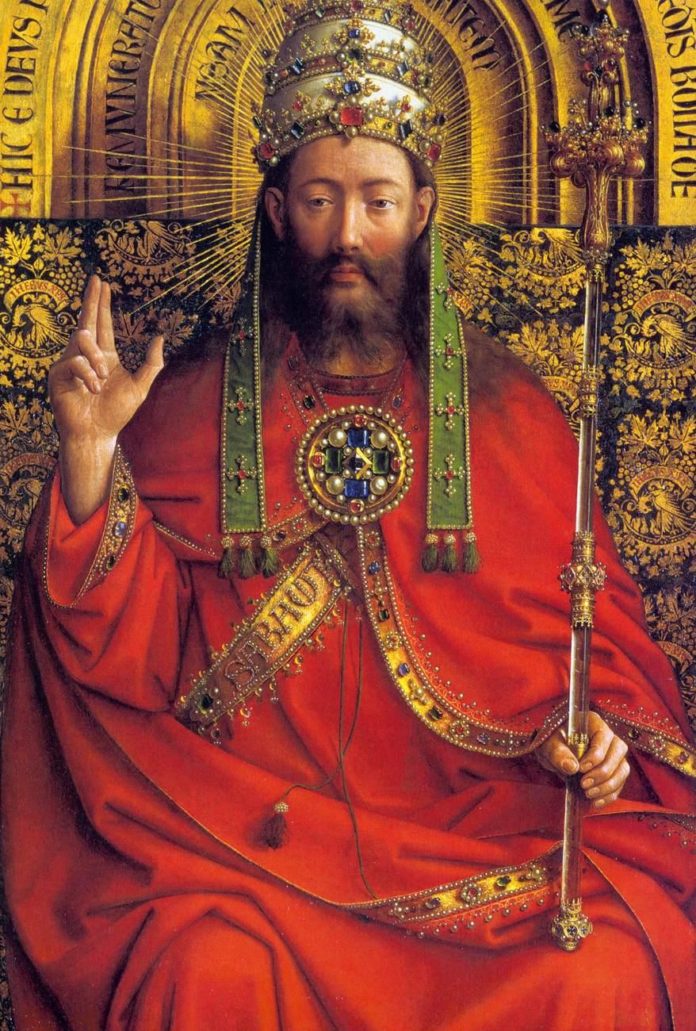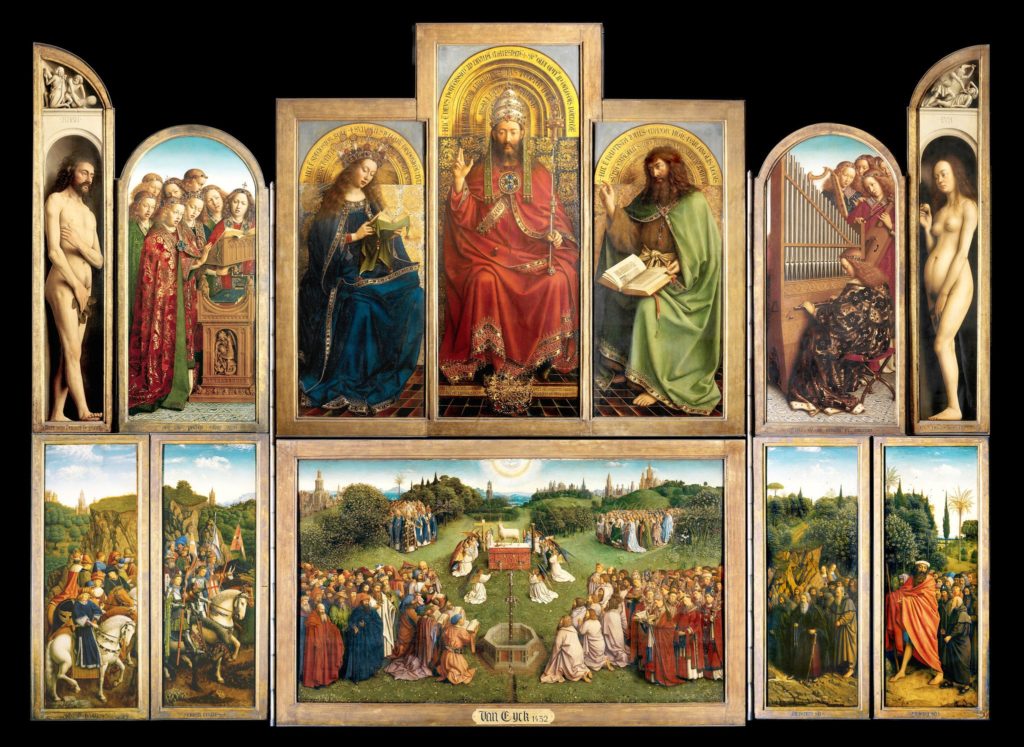
The Getty Los Angeles is just full of great news this week! On top of the major Caravaggio exhibition slated for November 21, the institution also recently announced major enhancements to the website “Closer to Van Eyck.” What’s the story? You’ll want to see this.
Launched in 2012, the Getty Foundation and the Royal Institute for Cultural Heritage (Brussels) website “Closer to Van Eyck” has provided breathtaking details of one of the most important works of art in the world: “The Ghent Altarpiece.” The two organizations recently announced major upgrades and enhancements to the platform, including new images of the work under various stages of conservation treatment, a larger range of technical images, and the ability to see and compare multiple views of the painting at the same time.
According to the press release, “Located at St. Bavo’s cathedral in Ghent, Belgium, ‘The Mystic Lamb of 1432’ by Hubert and Jan van Eyck, also known as the Ghent Altarpiece, is a stunning and highly complex painting composed of separate oak panels. Since 2010, several Getty Foundation grants have supported the conservation planning, examination, and training related to the altarpiece as part of its Panel Paintings Initiative. A collaboration among the Flemish government, the Royal Institute for Cultural Heritage, and their partners led to the first much-needed conservation treatment of the work in 2010. The panels and frames of the closed altarpiece were treated between 2012 and 2016 and the large-scale campaign now continues with the panels of the lower register of the open altarpiece. The ‘Closer to Van Eyck’ website launched in 2012, and had yet to receive major updates until now.

‘“The Getty Foundation is pleased to have supported the research and study that has led to the restoration of the Ghent Altarpiece currently underway,’ said Deborah Marrow, director of the Getty Foundation. ‘The enhanced documentation now available through “Closer to Van Eyck” brings even greater access to the genius of the artists that will both delight viewers and inspire new scholarship.’”
Continuing, the Getty writes, “The altarpiece was painstakingly recorded at every step of the conservation process through state-of-the-art photographic and scientific documentation. Thanks to the Royal Institute for Cultural Heritage’s imaging team, digital processing and design led by Frederik Temmermans of Universum Digitalis and the Vrije Universiteit Brussels, and imec’s Department of Electronics and Informatics, the altarpiece can now be viewed online in visible light, infrared, infrared reflectograph, and X-radiograph, with sharper and higher resolution images than ever before. Visitors to the site can now also adjust a timeline to view key moments in the conservation process, and have access to simultaneous viewing of images before, during, and after conservation. Users can zoom in even closer on details of the painting, exploring microscopic views of the work in 100 billion pixels.”
A tour of the site can be taken here: http://closertovaneyck.kikirpa.be/ghentaltarpiece/#home/sub=sitetour
This article was featured in Fine Art Today, a weekly e-newsletter from Fine Art Connoisseur magazine. To start receiving Fine Art Today for free, click here.







